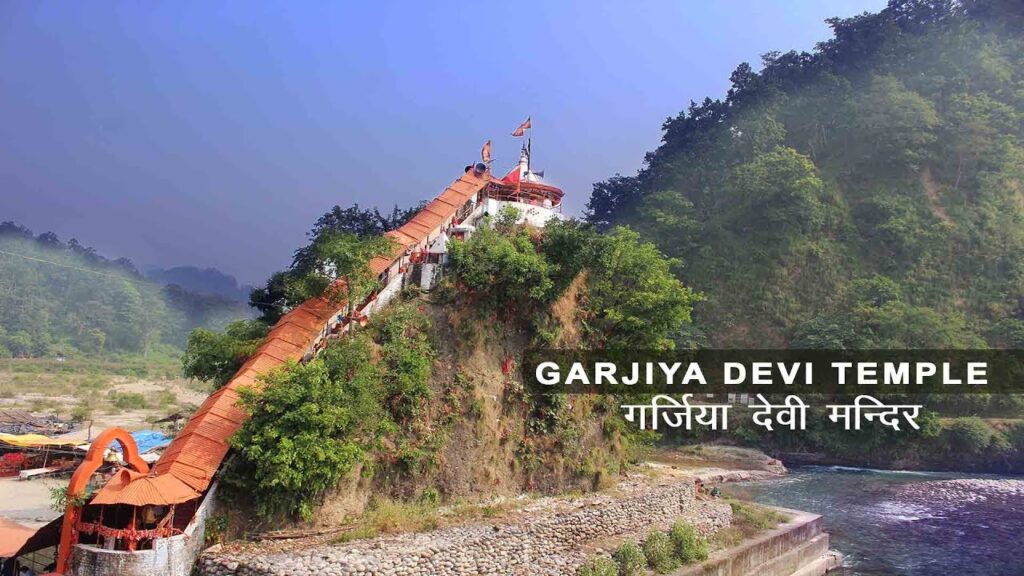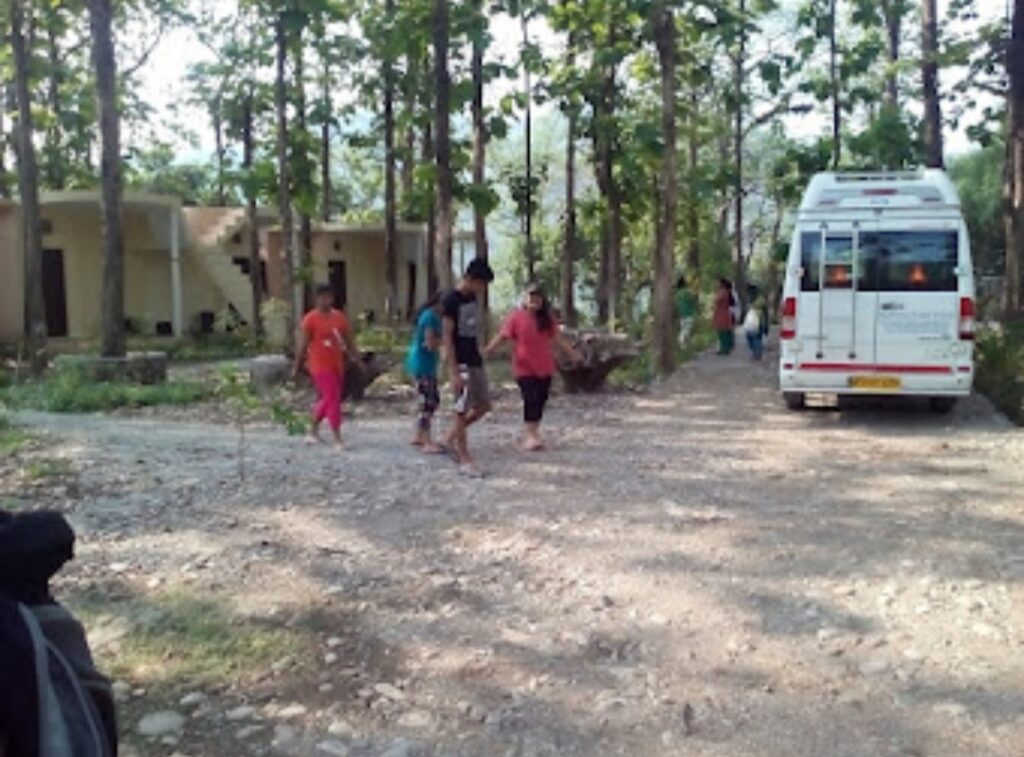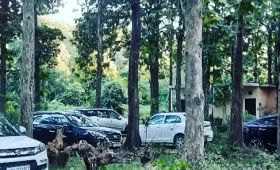
Sacred Sites: A Guide to Religious Tourism
1. Introduction to Garjiya Temple
The Garjiya Temple holds a significant place in Hindu mythology and serves as a revered religious site in the Indian state of Uttarakhand. Situated near the Kosi River, this temple is dedicated to Goddess Garjiya, a form of Goddess Parvati. With its rich historical background and captivating architectural features, the Garjiya Temple attracts pilgrims and tourists from all around the world. Apart from its religious prominence, the temple’s picturesque location amidst lush greenery and its proximity to the famed Corbett National Park adds to its allure. This article delves into the religious history, tourism significance, festivals, and other aspects of the Garjiya Temple, providing readers with a comprehensive understanding of its cultural, spiritual, and natural significance.
1. Introduction to Garjiya Temple
1.1 Location and Background
Garjiya Temple, located in the stunning Garjiya village of Uttarakhand, India, is a place of religious significance and natural beauty. Situated on the banks of the Kosi River, this temple attracts thousands of devotees and tourists every year. The temple is surrounded by lush greenery and provides a breathtaking view of the surrounding mountains, making it an ideal place for spiritual seekers and nature lovers alike.
1.2 Significance in Hindu Mythology
Garjiya Temple holds great importance in Hindu mythology and is dedicated to Goddess Garjiya Devi, an incarnation of Goddess Parvati. According to the legends, it is believed that Garjiya Devi protected the people of the region from the fury of the Kosi River. It is said that she tamed the wild river by sitting on a large rock at this very spot, earning her the name “Garjiya,” which means “roar” in Hindi. Devotees visit the temple to seek the blessings of Goddess Garjiya Devi for protection, prosperity, and success in their lives.
2. Historical Significance of the Garjiya Temple
2.1 Origins and Ancient History
The origins of Garjiya Temple can be traced back to ancient times. The temple is believed to have been established by a sage named Adi Shankaracharya, who played a significant role in reviving Hinduism in India. Over the centuries, the temple has undergone renovations and changes, but its spiritual significance has remained intact.
2.2 Influence of Raja Garjia
The temple derives its name from Raja Garjia, a local king who ruled the region many years ago. Legend has it that Raja Garjia was a devout worshipper of Goddess Garjiya Devi and he contributed to the temple’s development during his reign. His influence has solidified the temple’s connection to the local community, further establishing its significance.
2.3 Historical Events and Legends
The history of Garjiya Temple is rich with fascinating legends and historical events. One such legend revolves around the belief that taking a dip in the holy Kosi River near the temple during Kartik Poornima (a Hindu festival) can cleanse a person of their sins. The temple has also witnessed significant historical events, serving as a place of refuge during the devastating floods that Uttarakhand experienced in 2013 and 2021.
3. Religious Practices and Beliefs at Garjiya Temple
3.1 Temple Rituals and Offerings
At Garjiya Temple, daily rituals and ceremonies are performed with great devotion. The temple priests carry out various religious rituals, including the recitation of sacred hymns and offering prayers to the deity. Devotees offer flowers, fruits, and coconut to seek the blessings of Goddess Garjiya Devi. The atmosphere is filled with a sense of spirituality and devotion.
3.2 Role of Priests and Religious Leaders
The priests and religious leaders play an essential role in maintaining the sanctity of the temple. They guide the devotees through the rituals and provide spiritual guidance. Their knowledge and expertise ensure that the religious practices at Garjiya Temple are carried out in accordance with tradition and customs.
3.3 Devotee Experiences and Testimonials
Visitors to Garjiya Temple often share their transformative experiences and testimonials. Many claim to have felt a sense of peace and divine energy while in the temple premises. Devotees believe that their prayers have been answered and that they have received blessings and protection from the goddess. These stories add to the spiritual aura and allure of the temple.
4. Architectural Features of Garjiya Temple
4.1 Iconic Temple Structure

Garjiya Temple boasts a unique architectural design that reflects the cultural heritage of the region. The temple stands on a raised platform and is built in the traditional North Indian style of architecture. Its vibrant colors and intricate detailing make it a visually captivating sight for visitors.
4.2 Intricate Stone Carvings and Artwork
The temple’s exterior is adorned with beautiful stone carvings depicting various gods and goddesses from Hindu mythology. From intricate filigree work to delicate sculptures, the craftsmanship on display is truly remarkable. These artistic elements add a touch of grandeur to the temple and showcase the skill of the artisans.
4.3 Sacred Shrine and Inner Sanctum
The inner sanctum of Garjiya Temple houses the sacred shrine of Goddess Garjiya Devi. The shrine is beautifully adorned with flowers, garlands, and colorful drapes. Devotees gather here to offer their prayers and seek the blessings of the goddess. The serene ambiance of the inner sanctum creates a tranquil space for devotees to connect with the divine.
5. Festivals and Celebrations at Garjiya Temple
5.1 Importance of Navratri Festival
Navratri, meaning “nine nights,” is a significant Hindu festival celebrated with great fervor at Garjiya Temple. During this auspicious time, devotees gather to honor the goddess Durga and seek her blessings. The temple becomes a hub of vibrant energy, with beautifully adorned idols, devotional music, and rhythmic dance performances. It is believed that worshipping the goddess during Navratri brings prosperity and good fortune.
5.2 Annual Temple Fairs and Melas
Apart from Navratri, Garjiya Temple hosts annual fairs and melas that attract a large number of visitors. These events offer a unique experience of traditional music, dance, cultural performances, and local delicacies. The lively atmosphere of these fairs creates a sense of celebration and unity among people from different backgrounds.
5.3 Other Religious Observances and Events
Throughout the year, Garjiya Temple witnesses various religious observances and events. From special prayers on auspicious days to religious processions, these events add to the spiritual significance of the temple. Devotees come from far and wide to participate in these rituals and express their devotion.
6. Garjiya Temple as a Tourist Destination
6.1 Visitor Amenities and Facilities
Garjiya Temple offers a range of amenities and facilities to cater to the needs of tourists. These include clean restrooms, seating areas, and shaded spaces where visitors can relax and soak in the serene ambiance. Additionally, there are shops selling souvenirs and religious items for those wanting to take a piece of the experience home.
6.2 Accessibility and Transportation Options
Garjiya Temple is conveniently located and easily accessible for tourists. It is situated near Ramnagar in Uttarakhand and is well-connected by roads. Visitors can hire taxis, use public transport, or opt for private vehicles to reach the temple. The scenic drive to the temple is an added bonus, offering picturesque views of the surrounding landscapes.
6.3 Recommended Itineraries for Tourists
For tourists planning their visit to Garjiya Temple, various itineraries can ensure a fulfilling experience. Apart from exploring the temple, visitors can indulge in activities such as wildlife safaris in Corbett National Park, enjoying a riverside picnic near the Kosi River, or going on nature walks in the nearby forests. These activities provide a well-rounded glimpse into the natural and cultural attractions of the region.
7. Wildlife and Natural Attractions in the Garjiya Temple Vicinity

7.1 Corbett National Park and its Biodiversity

Garjiya Temple is located in close proximity to Corbett National Park, renowned for its rich biodiversity. Visitors can embark on exhilarating wildlife safaris to catch glimpses of majestic tigers, leopards, elephants, and an array of bird species. The park’s lush landscapes and serene atmosphere make it a must-visit destination for nature enthusiasts.
7.2 Scenic Beauty of Kosi River

The Kosi River flowing near Garjiya Temple offers a scenic backdrop to the religious site. Visitors can relax by the riverside, enjoy boat rides, or indulge in fishing activities. The soothing sounds of the flowing water and the picturesque surroundings create a tranquil and rejuvenating experience.
7.3 Nature Walks and Trekking Trails
Surrounded by lush forests and verdant hills, the vicinity of Garjiya Temple offers ample opportunities for nature walks and trekking. Exploring the trails allows tourists to immerse themselves in the natural beauty, spot unique flora and fauna, and experience the serenity of the Himalayan foothills. 8. Community Impact and Local Economy through Garjiya Temple Tourism
8.1 Socio-economic Benefits for Local Residents
Garjiya Temple tourism has had a positive impact on the local community, providing socio-economic benefits. The influx of visitors has led to the growth of small businesses, including eateries, accommodation options, and souvenir shops. Additionally, the increased economic activity has generated employment opportunities for the local residents, contributing to the overall welfare of the community.
8.2 Employment Opportunities and Small Businesses

The thriving tourism industry centered around Garjiya Temple has created employment opportunities for the residents of the surrounding areas. From guides and drivers to hotel staff and artisans, many individuals have found sustainable livelihoods through the influx of tourists. Additionally, small businesses catering to the needs of visitors have flourished, further enhancing the local economy.In conclusion, the Garjiya Temple stands as a testament to the deep-rooted religious traditions and architectural marvels of Uttarakhand. Its historical significance, religious practices, and vibrant festivals make it a cherished destination for devotees and tourists alike. The serene natural surroundings, including the captivating wildlife and the majestic Kosi River, further enhance the temple’s allure. As visitors immerse themselves in the spiritual ambiance and explore the natural beauty of the vicinity, the Garjiya Temple continues to leave a lasting impact on the hearts and minds of all who visit.
FAQ 1. Can non-Hindus visit the Garjiya Temple? Yes,
non-Hindus are welcome to visit the Garjiya Temple. The temple is open to people of all faiths and backgrounds who wish to experience its cultural and spiritual significance. It is important to respect the customs and traditions of the temple while visiting.
2. Are there any restrictions on photography inside the temple?
Photography is generally allowed in the Garjiya Temple, but it is advisable to be respectful and mindful of the religious atmosphere. Some areas or rituals may have specific guidelines or restrictions, so it is recommended to seek permission from the temple authorities or priests before taking photographs.
3. Is there any accommodation available near the Garjiya Temple?
Yes, there are several accommodation options available near the Garjiya Temple to cater to the needs of pilgrims and tourists. These range from budget guesthouses to luxury resorts. Shekhar Corbett safari camp Garjiya, Corbett Jungle inn, Mohan, Shekhar Camp Big Cat Corbett, Jim corbett home stay, Riverside forest Lodge Mohan etc are good accommodation and you can directly book on phone number +919639339395
It is advisable to make advance bookings, especially during peak tourist seasons, to ensure a comfortable stay.
4. How can I reach the Garjiya Temple?
The Garjiya Temple is located in the Uttarakhand state of India. The nearest major city is Ramnagar, which is well-connected by road and rail. From Ramnagar, the temple can be reached via a short drive along the Kosi River. Various modes of transportation, including taxis and buses, are available for reaching the temple.




